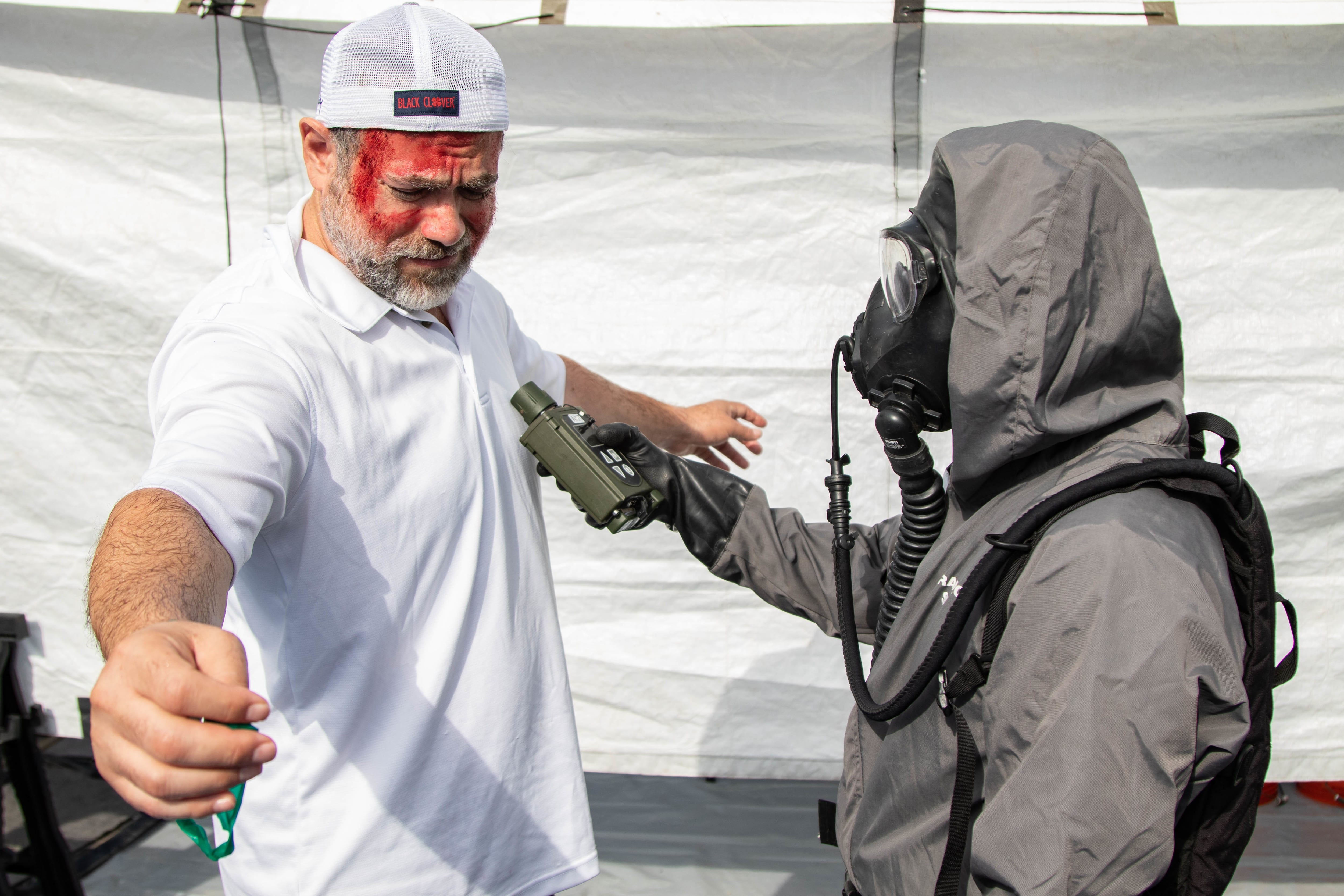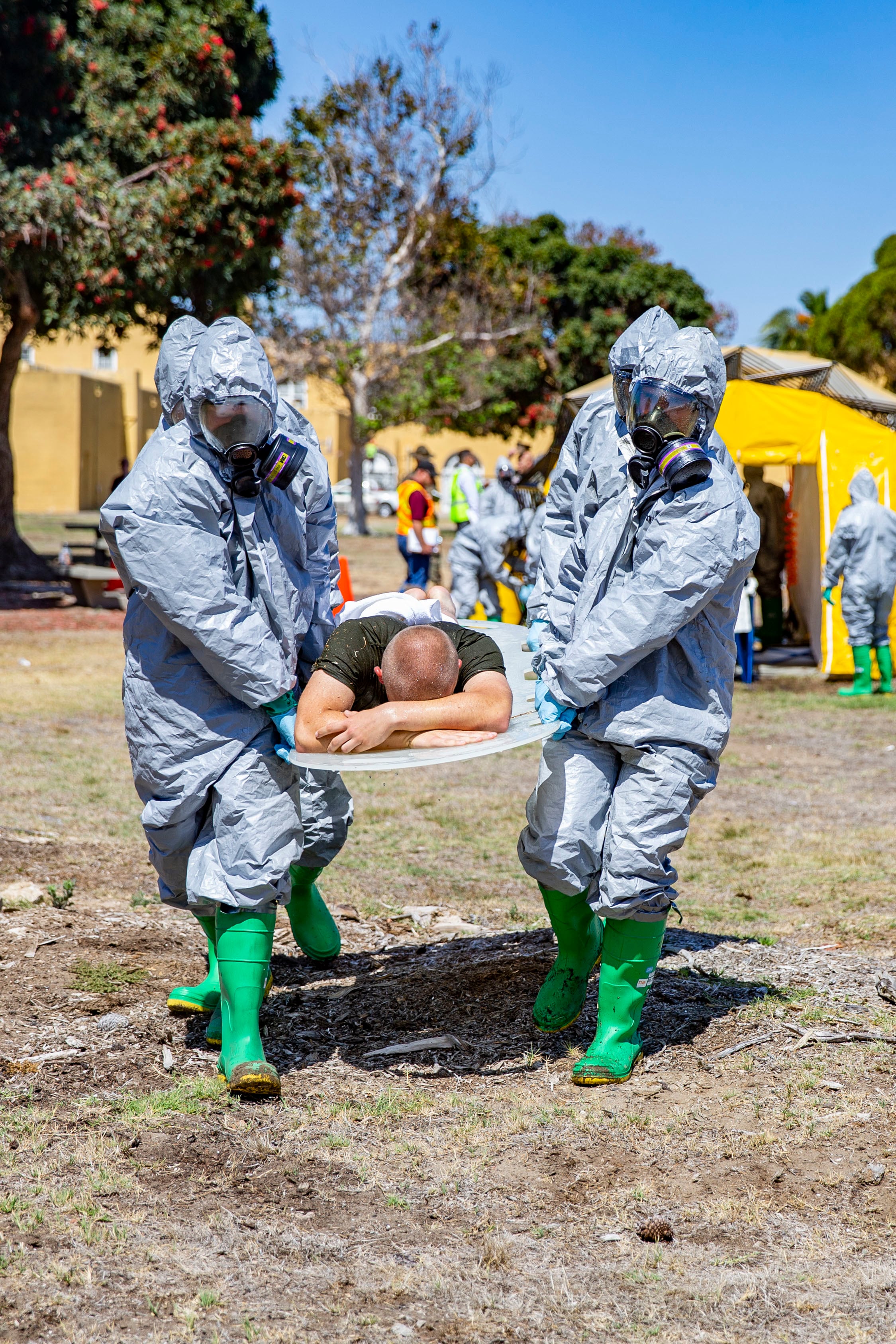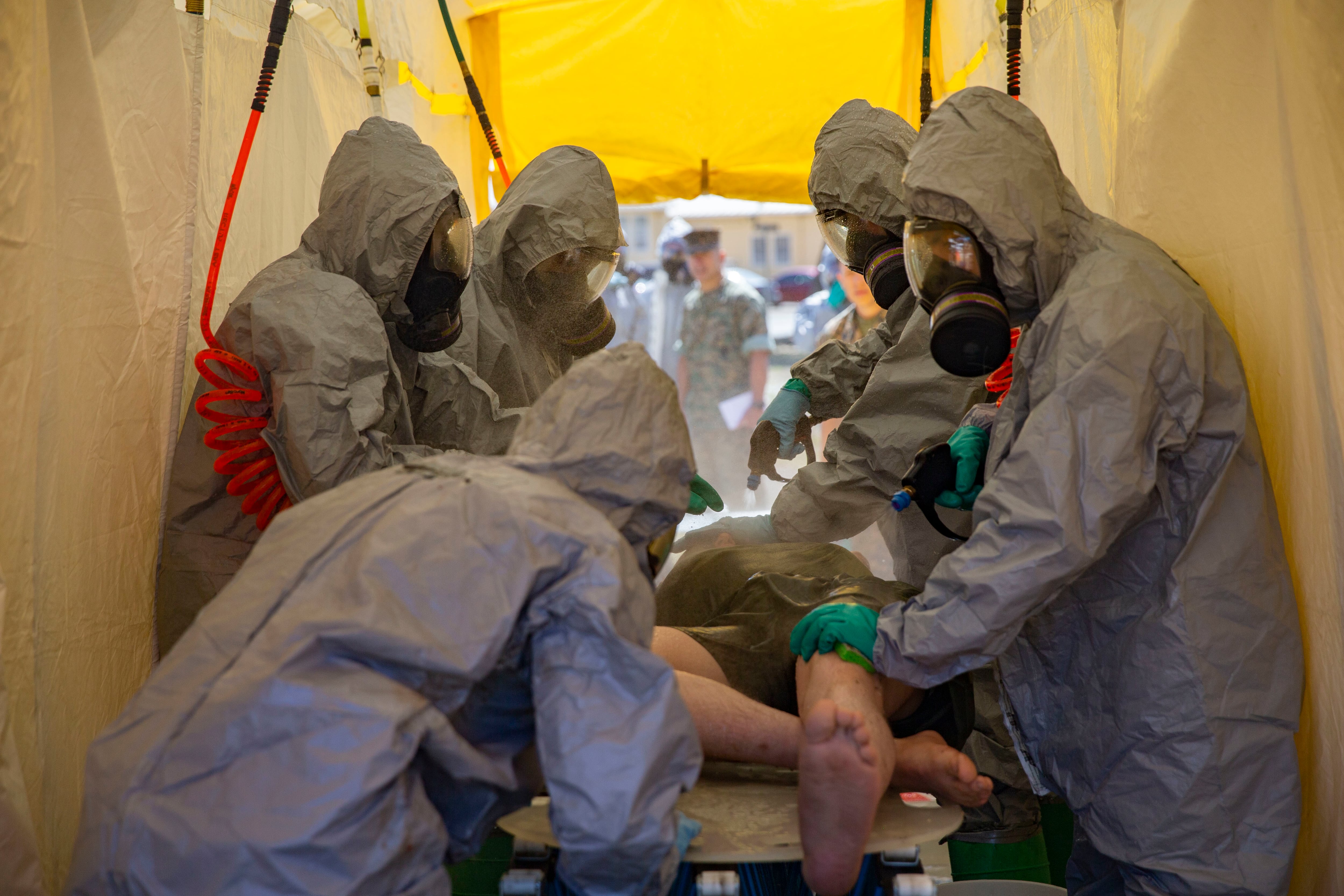BALTIMORE — Over the next few years, troops working closely with chemical, biological, radiological and nuclear threats will get new suits, gloves and better detection devices.
Those are small, though important, changes in how they can better combat a growing list of nasty threats that do not always involve bullets and missiles.
But what will really change their work is a combined threat review, new strategy and increased funding to push CBRN to the forefront of defense thinking.
RELATED

The larger “pivot” and “transformation” that one senior defense official signaled at a conference devoted to the trade of defeating such threats, is a comprehensive posture review, increased funding across multiple years and a new way to integrate CBRN defense into everything troops do.
With that new prioritization and funding, officials hope CBRN gear and strategy seep into the total force.
Adding another layer of data mining and machine learning will help frontline CBRN better face currently unknown dangers that threaten to overwhelm defense, civilian and emergency response in ways that could exceed the COVID-19 pandemic.
Assistant Secretary of Defense for Nuclear, Chemical and Biological Defense programs Deborah Rosenblum laid out the big picture in her remarks on July 28, the second day of the annual National Defense Industrial Association’s CBRN conference here in Baltimore, Maryland.
“We are not going to figure it out as we go,” Rosenblum said. “We need a radical transformation.”
Rosenblum characterized the growing chemical and biological threat as “vastly more difficult” and “rapidly changing.”
Multiple speakers throughout the two-day event hammered away that the old days of “one bug, one drug” are gone. That is the methodology that existed for decades with threats such as smallpox or anthrax, both deadly viruses that do have existing vaccinations.
While COVID-19 came from human-animal contact, current and future threats may be designed by adversaries such as Russia, China, North Korea, Iran or non-state actors specifically to confound existing identification tools. That masks who made it, what it is and how to treat it.

And those are not casual references. The 2022 State Department Report on Adherence and Compliance for arms control, including chemical and bioweapons programs, made specific notes as to these adversaries.
“The People’s Republic of China (PRC) continued to engage in activities with dual-use applications, which raise concerns regarding its compliance with Article I of the BWC,” the report read.
The bulk of the State Department report regarding alleged weapons programs, specifically dual-use ones, includes estimated activity and fears of malign uses of biological and chemical technology due to incomplete, inaccurate, or sometimes misleading information.
The United States also has its own biodefense and biological technology programs, which could themselves be switched to “dual-use.” The United States also pursued and created vast stores of chemical weapons and biological agents before committing to end offensive bioweapons programs and joining the Chemical Weapons Convention, along with most other states in the world.
Russia maintained a robust biological and chemical weapons infrastructure while part of the Soviet Union. Despite public denial of such programs, Russian officials admitted in the early 1990s that its bioweapons program continued into the late days of the Cold War.
Media reports have also pointed to multiple political assassinations that the Kremlin, at the behest of Russian President Vladmir Putin, conducted using radiological elements and the fourth-generation nerve agent Novichok.
Then there’s North Korea, which has had a bioweapons capability since the 1960s, according to the State Department report.
“North Korea probably has the capability to produce sufficient quantities of biological agents for military purposes upon leadership demand,” the report stated.
However, outside experts, such as those with the Bulletin for Atomic Scientists, note that depictions of North Korean military capabilities want for tangible evidence. The closed-border country’s leadership could be touting strong bioweapons programs simply as a strategic bluff.
“One must be prudent when discussing North Korea, and not jump to conclusions or ascribe a threatening meaning to any sliver of information that manages to emerge, particularly when it emerges in a time of crisis,” wrote Sonia Ben Ouagrham-Gormley, then an associate professor studying biodefense at George Mason University, in a 2017 article on the Bulletin.
A 2020 report by the thinktank Stimson drew a similar conclusion. The Stimson report noted that the U.S. government has made these claims for years without a clear definition of a bioweapons program.
“However, based on a definition by United Nations (UN) inspectors investigating Iraq’s BW activities, probably the most that can be said in the case of North Korea is that it may have or have had a BW program,” the Stimson report stated.
Regardless, biological and chemical threats still present a challenge for the Pentagon. Secretary of Defense Lloyd Austin sent a memo in late 2021 calling for a Biodefense Posture Review both for naturally occurring and manufactured biological threats.
That review kicked off in January and is expected to take about a year, according to Rosenblum, the assistant secretary of defense for nuclear, chemical and biological defense programs.
Ian Watson, deputy assistant secretary of defense for chemical, biological defense, said in a separate panel in Baltimore that the posture review will “outline critical aspects of the threat.” The move will raise the profile of CBRN in the national defense strategy, concepts of operations and operation plans across the force, he added.
“Early warning is critical,” Watson said. That is because the use of biological or chemical attacks could preclude the start of armed conflict to prepare the battlespace.
But already, the Pentagon bumped up spending on chemical and biological defense with $300 million more in the currently proposed budget and a total of $1.2 billion additional funding over the next five years of budgeting.
Major moves that Rosenblum is pushing include adding CBRN sensors on most existing tactical platforms, as well as future platforms, from manned to unmanned, troop carriers to individual drones.
The Pentagon also needs to use advanced algorithms and technical solutions to do better satellite and thermal imaging that could spot and track the spread of chemical weapons releases.
A variety of entities across the Defense Department are developing modern vaccines that can be used before exposure as a protective measure and afterward as a treatment.
That same vaccine research is also solving the “one bug, one drug” problem by building vaccines that address a family of viruses or even attack the symptom, such as upper respiratory problems, which exist across several viruses.
A major initiative comes down to the lowest level — the individual soldier, sailor, airman or Marine. And that is through a program that seeks to have detection capabilities on wearable devices.
The Pentagon tried this before, with old chemical detection strips that often got contaminated by other debris. They also built a white-faced watch-like device to detect exposure called the DT236. The problem with that device was that it had to be sent to a lab for analysis.
That meant a soldier in the field unsure if they had been exposed was waiting days or longer to find out.
But the new wearables, such as commercially available smartwatches with certain sensors, could provide real time updates to chemical and bioweapons exposure.
“With these efforts, every warfighter can be a chemical or biological sensor themselves,” Rosenblum said.
And while all those efforts are necessary for new threats, a new strategy will drive better protection, she said.
“We can have the best material in the world, but if culture and mindset are not integrated…it’s going to sit on the side,” Rosenblum added.
Past practices did not always allow CBRN experts to know what they were dealing with, at what concentration and at what scale. That often meant pulling entire units out or cordoning off swaths of the battlespace.
Those measures are great for adversaries because it reduces troops in the fight and restricts the battlefield.
But, if leaders can take a more tailored approach to how they prepare for such attacks and react to them when they occur, they can be more effective on the battlefield, experts said.
Todd South has written about crime, courts, government and the military for multiple publications since 2004 and was named a 2014 Pulitzer finalist for a co-written project on witness intimidation. Todd is a Marine veteran of the Iraq War.




